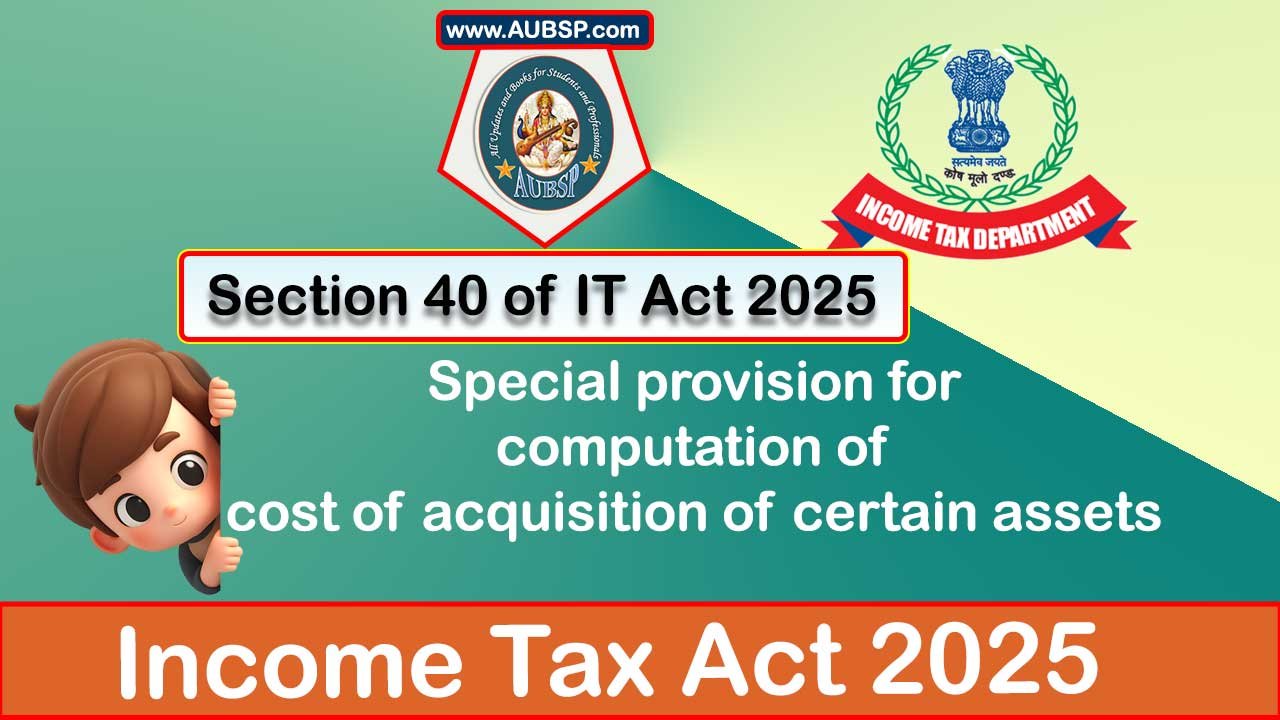Special provision for computation of cost of acquisition of certain assets
[Section-40 as per the Income Tax Act, 2025 (this Act) w.e.f. 1st April, 2026.]
Section 40(1) of Income Tax Act 2025
40(1) For the purposes of computation of income under the head “Profits and gains of business or profession”, cost of acquisition of an asset acquired by––
- (a) an amalgamated company under a scheme of amalgamation; or
- (b) an assessee, under a gift, or will, or an irrevocable trust, or on total or partial partition of a Hindu undivided family, when sold as stock-in-trade shall be the sum of—
- (i) cost of acquisition of the said asset in the hands of the amalgamating company in case of clause (a), or the transferor or donor in case of clause (b);
- (ii) any cost of improvement made;
- (iii) any expenditure incurred by the amalgamating company or transferor or donor wholly and exclusively in connection with such transfer.
Section 40(2) of Income Tax Act 2025
40(2) This section shall not apply to an asset referred to in section 67(6).
FAQs on Section 40(2) of Income Tax Act 2025
1. What is Section 40 of the Income Tax Act, 2025 about?
It provides a special method to determine the cost of acquisition of certain assets when sold as stock-in-trade, particularly in the context of amalgamations, gifts, wills, trusts, and HUF partitions.
2. From when is Section 40 applicable?
It is applicable from 1st April, 2026, as per the Income Tax Act, 2025.
3. How is the cost of acquisition determined for an asset acquired under amalgamation?
The cost is the same as it was in the hands of the amalgamating company, plus any improvement costs and transfer-related expenses incurred by the amalgamating company.
4. How is the cost of acquisition determined for assets received via gift, will, trust, or HUF partition?
The cost is the same as in the hands of the donor/transferor, along with costs of improvement and any transfer-related expenses borne by them.
5. What three components are considered while computing the cost of acquisition under Section 40?
- Original cost in the hands of prior owner
- Cost of improvement
- Expenditure related to transfer
6. Who must have incurred the cost of improvement or expenditure for it to be included?
The amalgamating company, donor, or transferor, depending on how the asset was acquired.
7. Does Section 40 apply to all assets?
No, it does not apply to assets referred to in Section 67(6).
8. Is this provision applicable if the asset is sold as a capital asset?
No. This section applies only if the asset is sold as stock-in-trade, i.e., as part of business or profession.
9. What is the meaning of “sold as stock-in-trade”?
It means the asset is part of inventory and sold in the ordinary course of business, not as a capital investment.
10. Is indexation benefit available under Section 40?
No, indexation benefit is not mentioned or applicable under this section since it deals with business income, not capital gains.
11. What if the cost of acquisition of the previous owner is not ascertainable?
In such cases, general valuation or judicial precedents may be followed as per applicable rules and assessment by the tax authorities.
Section 40 provides a special rule for determining the cost of acquisition of assets acquired through amalgamation, gift, will, irrevocable trust, or HUF partition, when such assets are sold as stock-in-trade.
The cost includes the original cost in the hands of the prior owner, cost of improvements, and transfer-related expenses. However, it excludes assets covered under Section 67(6). This ensures continuity of tax treatment when ownership changes without a typical market transaction.

